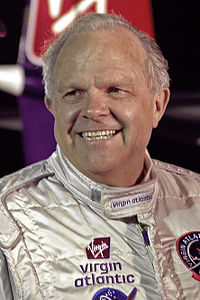
“Fossett landed in Leader, Saskatchewan, Canada, after taking off from South Korea, becoming the first person to make a solo flight across the Pacific Ocean in a balloon
Steve Fossett was well known for his world records and adventures in balloons, sailboats, gliders, and powered aircraft. He was an aviator of exceptional breadth of experience. He wanted to become the first person to achieve a solo balloon flight around the world (finally succeeding on his sixth attempt, in 2002, becoming the first person to complete an uninterrupted and unrefueled solo circumnavigation of the world in any kind of aircraft).
He set, with co-pilot Terry Delore, 10 of the 21 Glider Open records, including the first 2,000 km Out-and-Return, the first 1,500 km Triangle, and the longest Straight Distance flights. His achievements as a jet pilot in a Cessna Citation X include records for U.S. Transcontinental, Australia Transcontinental, and Round-the-World westbound non-supersonic flights. Prior to Fossett’s aviation records, no pilot had held world records in more than one class of aircraft; Fossett held them in four classes.
In 2005, Fossett made the first solo, nonstop unrefueled circumnavigation of the world in an airplane, in 67 hours in the Virgin Atlantic GlobalFlyer, a single-engine jet aircraft.
In 2006, he again circumnavigated the globe nonstop and unrefueled in 76 hours, 45 minutes in the GlobalFlyer, setting the record for the longest flight by any aircraft in history with a distance of 25,766 statute miles (41,467 km).
He set 91 aviation world records ratified by Fédération Aéronautique Internationale, of which 36 stand, plus 23 sailing world records ratified by the World Sailing Speed Record Council.
On August 29, 2006, he set the world altitude record for gliders over El Calafate, Argentina at 15,460 meters (50,720 ft).
At 8:45 a.m. on the morning of Monday, September 3, 2007 (Labor Day), Fossett took off in a single-engine Super Decathlon light aircraft from the Flying-M Ranch private airstrip, near Smith Valley, Nevada. When he failed to return, searches were launched about six hours later. There was no signal from the plane’s emergency locator transmitter (ELT) designed to be automatically activated in the event of a crash, but it was of an older type notorious for failing to operate after a crash.
It was first thought that Fossett may have also been wearing a Breitling Emergency watch with a manually operated ELT that had a range of up to 90 miles (140 km), but no signal was received from it. On September 13, Fossett’s wife, Peggy, issued a statement clarifying that he owned such a watch but was not wearing it when he took off for the Labor Day flight.
On the second day, Civil Air Patrol aircraft searched but found no trace of wreckage after initiating a complex and expanding search of what later evolved into a nearly 20,000 square miles (52,000 km2) area of some of the most rugged terrain in North America.
By September 10, search crews had found eight previously unidentified crash sites, some of which were decades old. The urgency of what was still regarded as a rescue mission meant that minimal immediate effort was made to identify the aircraft in the uncharted crash sites, although some had speculated that one could have belonged to Charles Clifford Ogle, missing since 1964. About two dozen aircraft were involved in the massive search, operating from the primary search base at Minden, Nevada, with a secondary search base located at Bishop, California.
On September 29, 2008, a hiker found three crumpled identification cards in the eastern Sierra Nevada in California about 65 miles (100 km) south (186 degrees) of Fossett’s take-off site. The items were confirmed as belonging to Fossett and included an FAA-issued card, his Soaring Society of America membership card, and $1,005 in cash.
On October 1, late in the day, air search teams spotted wreckage on the ground at an elevation of 10,100 feet (3,100 m), about 750 yards (690 m) from where the personal items had been found. Later that evening the teams confirmed the identification of the tail number of Fossett’s plane.”
Source: Wikipedia
